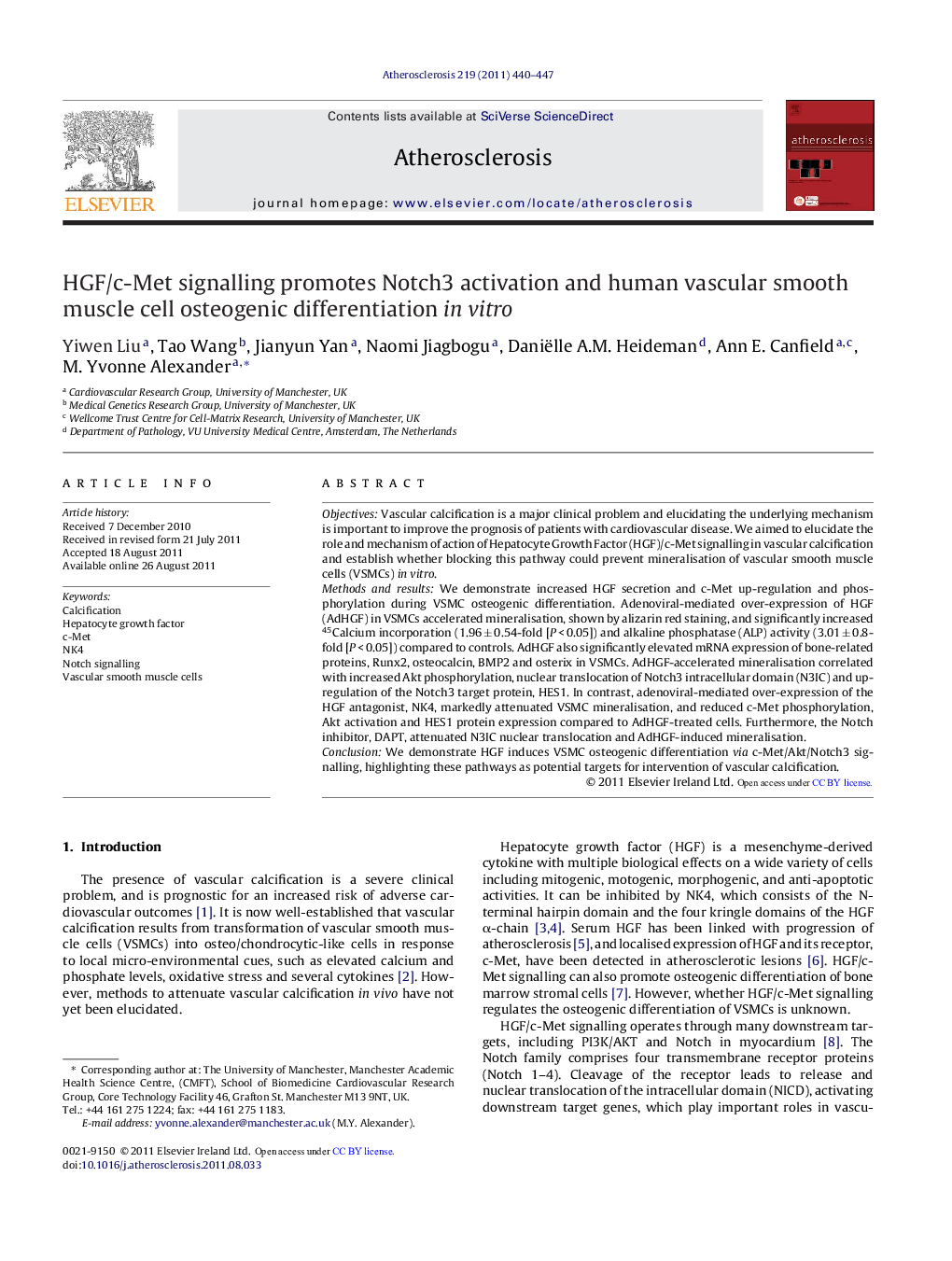| Article ID | Journal | Published Year | Pages | File Type |
|---|---|---|---|---|
| 5949187 | Atherosclerosis | 2011 | 8 Pages |
ObjectivesVascular calcification is a major clinical problem and elucidating the underlying mechanism is important to improve the prognosis of patients with cardiovascular disease. We aimed to elucidate the role and mechanism of action of Hepatocyte Growth Factor (HGF)/c-Met signalling in vascular calcification and establish whether blocking this pathway could prevent mineralisation of vascular smooth muscle cells (VSMCs) in vitro.Methods and resultsWe demonstrate increased HGF secretion and c-Met up-regulation and phosphorylation during VSMC osteogenic differentiation. Adenoviral-mediated over-expression of HGF (AdHGF) in VSMCs accelerated mineralisation, shown by alizarin red staining, and significantly increased 45Calcium incorporation (1.96 ± 0.54-fold [P < 0.05]) and alkaline phosphatase (ALP) activity (3.01 ± 0.8-fold [P < 0.05]) compared to controls. AdHGF also significantly elevated mRNA expression of bone-related proteins, Runx2, osteocalcin, BMP2 and osterix in VSMCs. AdHGF-accelerated mineralisation correlated with increased Akt phosphorylation, nuclear translocation of Notch3 intracellular domain (N3IC) and up-regulation of the Notch3 target protein, HES1. In contrast, adenoviral-mediated over-expression of the HGF antagonist, NK4, markedly attenuated VSMC mineralisation, and reduced c-Met phosphorylation, Akt activation and HES1 protein expression compared to AdHGF-treated cells. Furthermore, the Notch inhibitor, DAPT, attenuated N3IC nuclear translocation and AdHGF-induced mineralisation.ConclusionWe demonstrate HGF induces VSMC osteogenic differentiation via c-Met/Akt/Notch3 signalling, highlighting these pathways as potential targets for intervention of vascular calcification.
